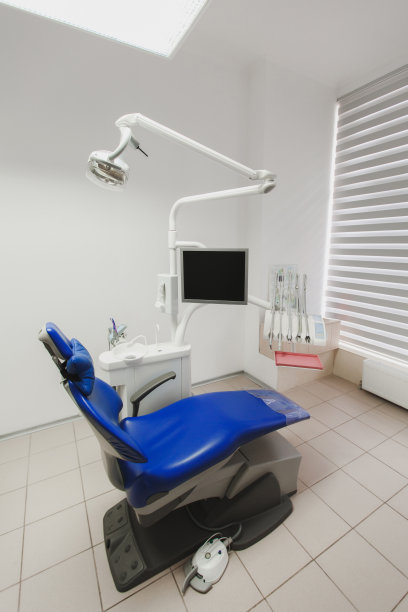The Essential Guide to Extracting a Tooth Safely and Effectively at Home or the Dentists Office
Summary: Extracting a tooth, whether at home or in a dental office, requires a careful approach to ensure safety and effectiveness. This guide provides valuable insights into the various methods of tooth extraction, underlining the importance of preparation, the tools required, and the aftercare necessary for optimal recovery. It discusses the distinction between home extractions and professional procedures, emphasizing when it is appropriate to seek a dentists help. Readers will also learn about the potential risks involved and how to mitigate them, making informed choices about their dental health. Ultimately, this comprehensive guide aims to equip individuals with the knowledge needed to navigate tooth extraction with confidence.
1. Understanding Tooth Extraction Procedures

Tooth extraction is typically categorized into two main types: simple and surgical extraction. Simple extractions are performed on teeth that are visible above the gum line and can be easily removed. These procedures are usually less complicated and can often be completed in a dentists office with local anesthesia. Conversely, surgical extractions are necessary when a tooth has broken off at the gum line or has not fully erupted. Such cases require more advanced techniques and are performed under more controlled conditions.
The first step in a tooth extraction is proper diagnosis. Dentists utilize X-rays and visual examinations to assess the condition of the tooth and the surrounding bone structure. Understanding the particularities of each case is crucial, as it helps determine the best course of action, be it a simple or surgical extraction, and informs the patient of what to expect during the procedure.
Preparing mentally and physically for a tooth extraction can significantly affect the experience. Patients should communicate openly with their dentists, discussing any apprehensions about pain or complications. It is important for individuals to be well-informed about their specific procedure and recovery process, allowing them to feel more relaxed and prepared.
2. Tools and Techniques for Safe Extraction
Extraction requires specific tools to ensure the procedure can be completed safely. Basic tools include dental mirrors, forceps, and elevators, which help dislodge the tooth from the socket. Dentists rely on these tools, utilizing their training and experience to maneuver safely and efficiently within the oral cavity. For home extractions, it is vital to utilize aseptic techniques, ensuring that tools are sterilized properly to prevent infection.
When performing an extraction, professionals typically use local anesthetics to numb the surrounding area, providing comfort to the patient. However, individuals considering home extractions should be aware that they must act quickly to minimize discomfort and risks. Mastering the techniques for using extraction tools takes years of training, which is a major reason why consulting with a dentist is advisable.
Post-extraction care is just as important as the procedure itself. Aftercare decisions can affect recovery significantly, with proper cleaning and medication playing critical roles. Patients should be instructed to avoid vigorous rinsing, drinking through straws, and smoking, as these actions might dislodge the blood clot that forms in the extraction site.
3. Risks and Complications of Tooth Extraction
Even though tooth extraction is a common dental procedure, it carries certain risks. Complications may arise, including excessive bleeding, infection, or damage to adjacent teeth. Up-to-date information and practices allow dental professionals to mitigate these risks effectively, ensuring a safer extraction process.
One common concern after extraction is dry socket, which occurs when the blood clot is dislodged prematurely. Symptoms of dry socket can include severe pain and an unpleasant odor. Individuals performing extractions at home must understand these risks and be prepared to contact a healthcare provider if complications arise.
When choosing to extract a tooth, its vital to recognize when to seek professional help. This is especially true for individuals with underlying health issues or those taking blood-thinning medications. A dentist can manage these risks with appropriate assessments and monitoring, providing an extra layer of safety that is often absent in home settings.
4. Proper Aftercare Following Tooth Extraction
After a successful tooth extraction, proper aftercare is crucial for healing. Patients are often advised to rest and avoid physical activity for a few days. Ice packs can also be applied to the affected area to reduce swelling and manage pain effectively.
Dietary choices play a significant role in the recovery process as well. After a few hours post-extraction, individuals should stick to soft foods and cool liquids to avoid irritating the extraction site. Foods such as yogurt, mashed potatoes, and smoothies are recommended, as they are both nutritious and easy to consume without chewing.
Monitoring for signs of infection or complications during the recovery phase is critical. This includes keeping an eye out for unusual swelling, prolonged bleeding, or fever. If any of these symptoms occur, promptly reaching out to a dentist can prevent further issues and ensure a smoother healing process.
Summary: In summary, the process of extracting a tooth, whether at home or with a dental professional, encompasses various steps, including preparation, choosing the right tools, understanding potential risks, and practicing proper aftercare. Education and communication are key components in navigating this procedure successfully. By seeking guidance when necessary and adhering to best practices, individuals can manage tooth extractions more effectively.
This article is compiled by Vickong Dental and the content is for reference only



